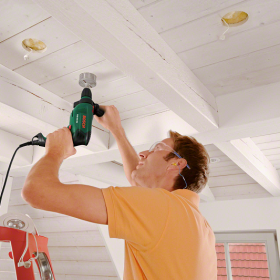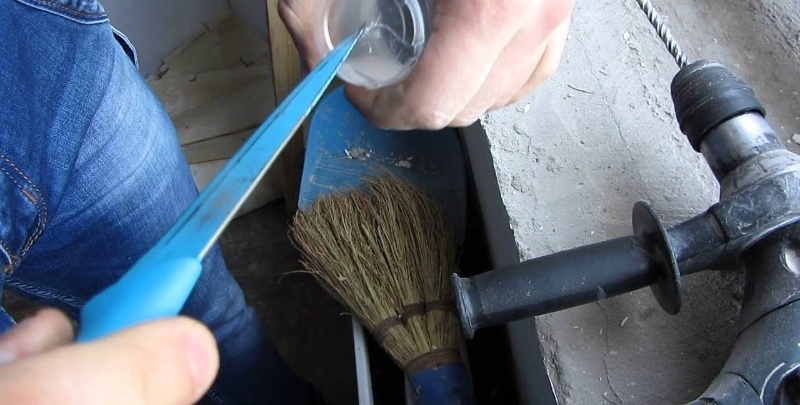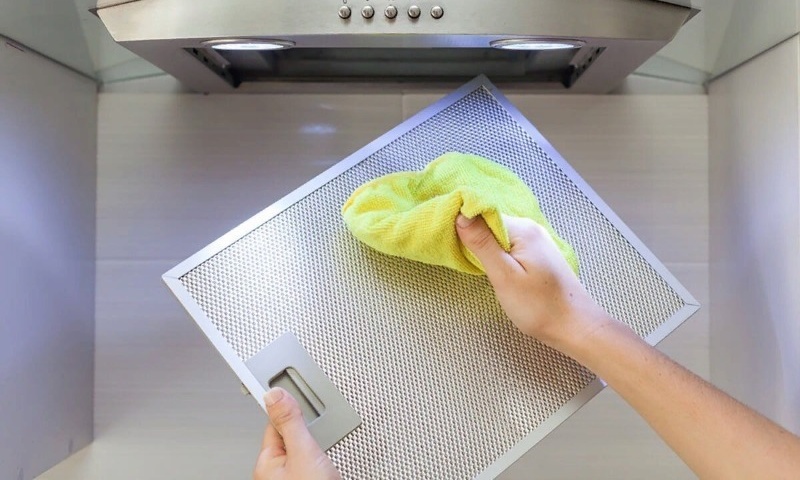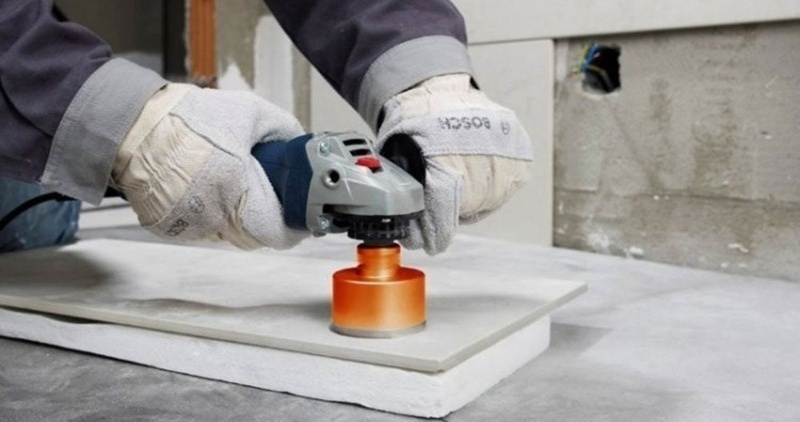An easy way to drill in the ceiling without dust

Any work related to drilling the ceiling in the house is a problem. At the same time, dust scatters so much that it sometimes takes longer to clean it than actually to drill.
What is inconvenient work

It is also difficult to make a hole in the ceiling because the face is lifted up during work, small specks fly into the eyes, and dust gets clogged in the nose. There are two ways to cope with the situation: popular and progressive. Progressive is used by professionals: these are special drills with nozzles or built-in vacuum dust collectors. The tool is not cheap and for one or two holes it makes no sense to acquire it.
Dust collector application

You can make a dust collector yourself. You need to use a paper or plastic cup, make a hole in the bottom and put it on the drill. Dust and fines from the ceiling will fall into the glass.
You can make a paper funnel. They fasten it with tape, cut off the sharp part of the cone and also with the help of tape fix it on a drill, higher than the drill attachment. The disadvantage of these methods is that the dust nevertheless swells around the apartment, however, in much smaller quantities.
You can use a half of a children's rubber ball as a dust collector. The principle of fastening is the same as with a glass. Only it is necessary to work with such a dust collector more carefully so as not to accidentally spread a rubber ball over the ceiling with a rubber ball - a trace may remain.
A vacuum cleaner will catch dust from the ceiling. There is a nuance here: in order to work well, one cannot cope alone. Be sure to need an assistant who will keep the vacuum cleaner hose in close proximity to the drilling site.
Independent manufacture and use of a dust collector

Using the most ordinary household sponge will allow you to deal with dust even more efficiently. To do this, you need: a bath sponge (or dishwashing) and a stationery knife (scissors with sharp edges are also suitable). In the center of the sponge, draw a circle with a diameter of approximately 5 mm. With a clerical knife or scissors, we cut through the foam rubber to a solid substrate. We carefully remove the foam, and in the substrate we make a small hole of such a diameter that the drill bit enters into it.
Before you put the sponge on the drill, you need to wet it with water. In this case, the dust will settle much better on the wet surface of the sponge and will not fly around the room. Just remember, the sponge should be squeezed out after contact with water so that it is moist, not wet.
Of course, all these devices will not be as effective as a professional hammer drill with a nozzle that collects dust. But then it will not cost you anything.


